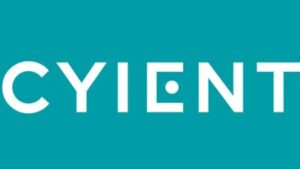With Agentic AI taking charge, the cloud governance seems all set to make a transformation in both its effectiveness and efficiency.
Technology leaps every few decades that fundamentally change the way industries operate. That leap in the form of Agentic AI is now happening in the cloud space. The invisible infrastructure of our digital world is witnessing the integration of agentic AI systems at an increasingly frantic pace. AI agents are transforming multi-cloud and distributed architectures into self-healing cognitive infrastructure. These are enabling cloud environments to automatically identify anomalies, segregate risks, and remove faults without human intervention. Thanks to these agents, cloud governance systems today have reached the capabilities of making decisions and initiating action on their own.
AI Agents: Cognition Behind Autonomous GovernanceAgentic AI has a cognitive layer of modern cloud operations. This enables systems to not just respond to change but also understand it. How does it happen? Well, this capability is powered primarily through the three core mechanisms: a) continuous monitoring and anomaly detection, b) root-cause prediction, and c) automated remediation interventions. AI agents employ reasoning, autonomous action, and decision-making in a fashion quite similar to human cognition. The scalability factor is also in their favour, which allows cloud environments to self-monitor, self-correct, and self-develop seamlessly. This approach is in stark contrast to the conventional governance model and flips the reactive legacy approach to a living framework of autonomous resilience. AI Agents-based Transformation: 5 ways of Heralding Change
a) Predictive Self-Healing Storage Systems:
Storage errors continue to be the major cause of cloud operations going awry. Hardware degradation, I/O bottlenecks, and replication delays cause downtime or data loss. In most cases, such situations are only recognised post-factum as traditional monitoring is based on a reactive approach. It only sends signals when the trouble has found its course. In environments which are rapidly scaling, the lag here could lead to loss of performance, compliance, and user trust. Agentic AI overturns this scenario by making storage a predictive, self-healing system. AI agents catch the most minute warning signals, and preventive services are initiated by the system itself. All these systems activate without human intervention, with infrastructure becoming a neural network that learns and evolves on its own.b) Autonomous Enforcement & Compliance: Manual compliance enforcement is becoming infeasible by the day. The multi-region deployments, hybrid architectures, and relentless data sprawl make the process impossible for most firms. Policy drifts and changing scenarios expose firms to regulatory and security risks way before detection. Agentic AI changes this compliance picture comprehensively. Instead of a reactive checklist, AI agents deploy an autonomous governance layer. By continuously tracking configurations, user actions, and data flows, AI agents ensure that enforcement and compliance procedures remain up to speed with changes happening in the real world.
c) Adaptive Resource Optimisation with Governance Controls: Cloud environments are powerful yet notoriously wasteful. As workloads scale, costs often balloon due to over-provisioned resources, idle VMs, and unoptimized storage tiers. Further, rigid governance policies make real-time optimisation difficult. In such circumstances, traditional cost tools can identify inefficiencies, but can’t act without risking compliance drift. This leaves organisations stuck between financial inefficiency and regulatory caution. Agentic AI-based systems can easily change that balance. Through their continuous analysis of workloads, usage patterns, and compliance boundaries, they make real-time adaptive optimisation a reality. These systems resize resources, shift workloads, and re-tier storage automatically without going beyond the governance limits.
d) Intelligent Data Governance and Classification: Manual governance and classification on the cloud ecosystem are very complex. Information of a highly sensitive nature — be it PII or financial or medical data — is flowing at a speed which compliance teams are not able to keep up with. While traditional tools tag data, agentic systems discover and classify data based on its sensitivity level. This enables systems to dynamically enforce controls and keep modulating the anchors as per the compliance conditions. By employing LLMs aligned with global frameworks, these systems communicate the complex legal texts in executable IT policies. Hence, data governance becomes real-time, adaptive, and policy-aware.
e) Incident Prevention and Human–AI Collaboration: Traditional incident management is reactive and exhausting — endless alerts, manual triage, and long MTTRs keep engineers firefighting instead of innovating. Agentic AI can change this by acting as an autonomous first responder. It detects anomalies early, performs diagnostics, and executes corrective actions instantly. When human input is needed, it collaborates through conversational interfaces, explaining root causes and suggesting fixes. Over time, these agents learn from operator decisions and preferences, evolving into co-pilots for governance and reliability.
AI Agents: Way Forward for Cloud Governance
In today’s multi-cloud reality, where scale and regulations evolve faster than teams, autonomous governance has become a business imperative. Organisations that deploy Agentic AI gain a competitive edge through faster incident recovery, innovative resource use, and scalable governance efforts. The way forward is clear: companies that enable their cloud to think, learn, and self-govern will lead the era of digital enterprise. Agentic AI has now surely emerged as a strategic foundation for intelligent, resilient, and trusted operations and will become a mainstay of enterprise operations in the future.
The author is Tarun Vashisht, Vice President, Sales & Customer Success, Aziro.
Disclaimer: The views expressed are solely of the author and ETCIO does not necessarily subscribe to it. ETCIO shall not be responsible for any damage caused to any person/organization directly or indirectly.










